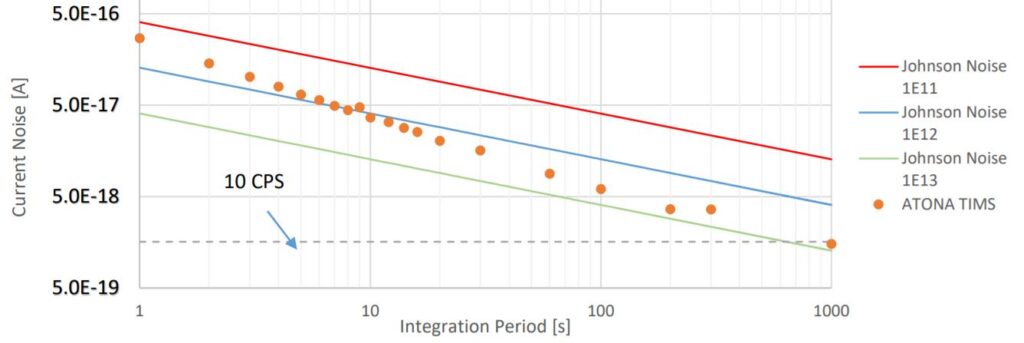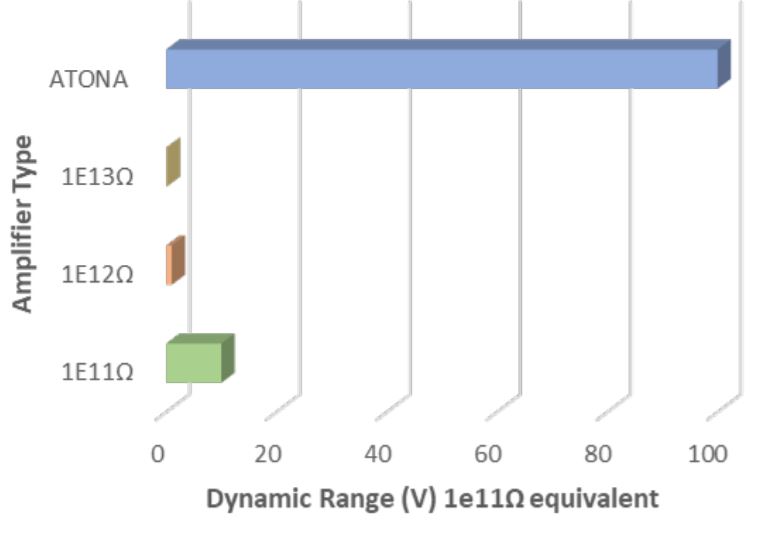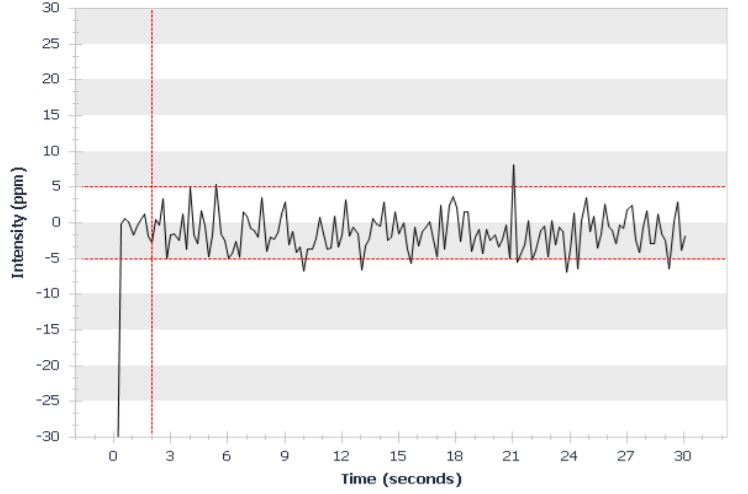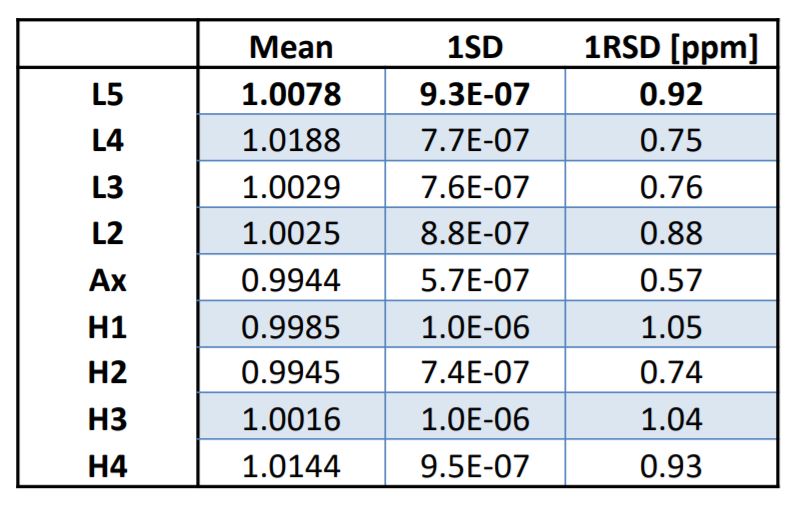Technical Note T30182
Isotopx Ltd, Dalton House, Dalton Way, Middlewich, Cheshire, CW10 0HU, UK.
Introduction
Over the past 20 years improvements in resistor amplification technology have slowed. The marginal gains that have been made are largely offset by the practical limitations. The newly developed ATONA (aA to nA) amplification technology from Isotopx has eliminated the need for a “feedback resistor”. The outcome is a significant reduction in amplifier noise, a dramatic increase in dynamic range, rapid amplifier decay, and improved baseline and calibration stability. In practice, this means analysis of signal sizes from 100’s cps up to 1nA (equivalent to 100V on 1e11Ω resistor amplifier), with low noise, <0.2 seconds amplifier decay time and ultimate baseline stability of <10 cps 1SD over 10 hours of analysis time. In addition, calibration of the amplifiers is stable to ~1ppm with no apparent drift over time.
Noise
Amplifier noise directly impacts on the precision of a measurement. The noise performance of a resistor based amplifier improves with increased integration time, but is theoretically limited by the Johnson-Nyquist noise of the specified resistor. By eliminating the “feedback resistor”, Isotopx ATONA amplifier surpasses the theoretical Johnson-Nyquist noise of a 1e12Ω resistor after 10 seconds of integration. After 200 seconds of integration the noise approaches the theoretical limit of 1e13Ω resistors. Unlike other amplification systems, these noise properties are applicable across the entire dynamic range and improve linearly with integration time.
Log-Log plot of measured and theoretical (Johnson-Nyquist) current noise.

Dynamic Range
In contrast to conventional resistor-based technology, ATONA amplification can detect signal sizes from 10’s cps to 1nA (100V in reference to 1e11Ω resistor amplifier) without any electronic or software switching throughout the entire dynamic range. This is of particular use in applications where large isotopic abundance ratios are present (e.g., Ca, Pb, U) Furthermore, the extreme dynamic range, in conjunction with low noise, enables measurement of unknowns with optimal precision regardless of isotopic composition.

Amplifier Decay
The time for an amplifier to return to baseline following measurement of a signal has always presented a significant challenge to resistor based designs. Lengthy amplifier decay reduces “on-peak” measurement time, ultimately leading to fewer ions being collected and lower analytical precision. Higher resistance amplifiers are characterized by prolonged amplifier decay times, i.e., for 1e13Ω resistor amplifier the time would be several seconds, making any peak hopping methodology difficult. With ATONA amplification, amplifier decay time is <0.2 seconds, faster than any commercially available resistor amplification, and requiring no artificial correction. Amplifier decay is therefore not a limiting analytical factor using ATONA.

Baseline Stability
Long term baseline stability has been measured at significantly less than 10 cps 1SD using 1000 second integrations. This results in a quantification limit (defined as 5 x 2SD) less than 100 cps. This emphasizes potentially how low the cross over point is between ion counting and ATONA amplification. This stability in combination with low noise offers the possibility of static Faraday measurement with ATONA yielding comparable precision to peak hopping on an ion counter in the 100’s cps range.
Inter-channel Gain stability
Long term inter-channel gain stability for ATONA amplification is exceptional. Using a completely novel gain calibration technique, amplifier gain stability is ~1ppm over 2 days. The data displayed no apparent long term drift or trends during the measurement period. Frequent amplifier calibration therefore becomes unnecessary.

Authors and Contact Information
Shaun Yardley, Zenon Palacz, Robert Guest, Matt Hockley.
Download Technical Note
Download the complete Technical Note: Introducing ATONA for TIMS – A paradigm shift in signal amplifier technology